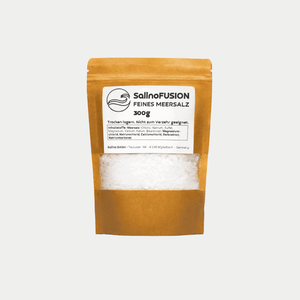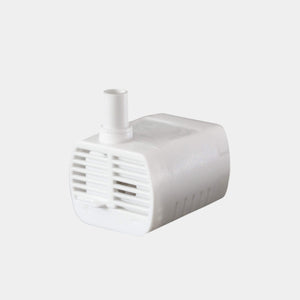When the air tastes like the sea

There are moments when the air changes—it becomes thicker, heavier, carrying a subtle taste of salt. Anyone standing at a graduation tower knows this feeling: each breath is more refreshing than the last, the chest seems to expand, the head clears. In Rhineland-Palatinate and neighboring Saarland, regions rich in spa tradition, history, and nature, such salt-air oases rise amidst cities, valleys, and parks.
From Bad Kreuznach through Bad Dürkheim to Bad Münster am Stein-Ebernburg and across to Rilchingen in Saarland, graduation towers have shaped the landscape of entire towns. They tell of a time when salt not only brought wealth but also promised health. Today, they are vibrant places where past and present intersect – places of power where people take a breath, pause, and treat themselves to a bit of relaxation with every stroke.
But those who regularly seek this experience quickly encounter limitations: entrance fees, travel times, excursions that fill an entire afternoon. What begins as a soothing visit adds up to considerable costs over the months. This is precisely why many wonder whether it might not be possible to permanently incorporate the salty air into their daily lives. Before opening up this perspective, we travel to seven of the most impressive graduation towers in Rhineland-Palatinate and Saarland - places where you understand why a breath is sometimes more than just air.
Bad Kreuznach - Salt air in the Nahe Valley
Bad Kreuznach has been synonymous with spa tradition for centuries. Several graduation towers rise up in the spa district, which, with a total length of over one kilometer, are among the largest in Germany. In the Salinental valley and the spa gardens of Bad Kreuznach and Bad Münster am Stein, nine graduation towers, which atomize mineral water, form Europe's largest open-air inhalation facility.
Bad Kreuznach's eight graduation towers have a combined length of approximately 1,100 meters and are now used for "health tourism." Anyone walking along here hears the incessant trickling of the brine over blackthorn brushwood and immediately senses how the air becomes heavier, denser, and more mineral-rich. It's as if one were transported to the coast—except that instead one is standing between vineyards and the Nahe River.
A visit in the early morning is particularly impressive, when the mist from the salt water mingles with the morning mist, bathing the park in an almost mystical atmosphere. For many, Bad Kreuznach is not just a spa town, but a place where salt air is part of everyday culture. Inhaling the salt air is beneficial for the skin and respiratory system.
The graduation towers are freely accessible and in operation year-round. Numerous benches and rest areas along the monumental brine walls invite you to linger. Many visitors spend hours here, reading, meditating, or simply enjoying the unique atmosphere. The combination of the length of the structures and the quality of the brine makes Bad Kreuznach one of the most important salt air locations in Europe.
Bad Dürkheim -- Salt air under the giant barrel silhouette
Bad Dürkheim in the Palatinate region is famous for its gigantic wine barrel and the Wurstmarkt (sausage market), but a closer look reveals a monumental graduation tower. The graduation tower stretches across the spa gardens as an impressive wooden structure, a landmark of the town alongside its wine.
Visitors stroll along the brine wall, breathe deeply, and enjoy the combination of salty air and the scent of the surrounding parkland. Many describe the experience as more intense than at smaller graduation towers – the density of the mist, the steady dripping of water, and the sheer size of the facility make the visit a complete experience.
Bad Dürkheim demonstrates how closely culture, health, and lifestyle are intertwined in the Palatinate region. The town lies on the German Wine Route and is surrounded by vineyards. The combination of wine tradition, Roman heritage, and salt air makes Bad Dürkheim a versatile destination. Many visitors combine a stay at the graduation tower with a wine tasting or a visit to the Roman archaeological site.
The graduation tower is nestled in a spacious spa park, which also includes a playground, hiking trails, and dining options. Families can spend an entire day here—the adults enjoy the salt air while the children play. This family-friendliness makes Bad Dürkheim particularly attractive for day trips.
The graduation tower is strategically located between the city center and the spa gardens, making it easily accessible for visitors. Many tourists who come to Bad Dürkheim for the wine discover the beneficial effects of the salt air by chance. The city has invested heavily in the maintenance and modernization of the graduation tower in recent years, while preserving its historic character.
Bad Münster am Stein-Ebernburg - Salt air between rocks and river
Bad Münster am Stein-Ebernburg is nestled between steep cliffs and the Nahe River – a backdrop that makes the graduation tower here something special. Directly adjacent to the spa park rises the Blackthorn Wall, from which the brine evaporates in fine drops. The salty mist mixes with the fresh river air, creating a climate that visitors describe as particularly clear and invigorating.
As you stroll along the grounds, your gaze repeatedly wanders to the imposing Red Rocks, which tower above the town. It is this interplay of natural drama and quiet relaxation that makes Bad Münster one of the most impressive graduation sites in Rhineland-Palatinate. The rocky landscape is unique and lends the town a special character.
Bad Münster is part of the Salinental valley, which stretches along the Nahe River. The graduation towers here are closely connected to those in Bad Kreuznach, forming Europe's largest open-air inhalation facility. Hiking trails connect the various locations, allowing ambitious visitors to embark on a veritable "brine hike."
The Red Rocks are not only a geological phenomenon, but also a popular climbing destination. Many climbers combine their sporting activity with a relaxing stay at the graduation tower – a combination of exertion and regeneration that challenges and nourishes the body holistically.
Bad Ems - Salt air in the historic spa town
Bad Ems is one of Europe's most traditional spa towns and was even declared a UNESCO World Heritage Site in 2021. Between neoclassical facades and magnificent spa facilities stands the graduation tower at the Emser Therme, which showcases the town's long healing tradition.
Visitors who stay here describe the experience as a journey back in time: the gentle dripping of the brine, the salty air that hangs in the elegant park, and the architecture that speaks of a time when emperors and poets sought relaxation in Bad Ems. Today, the graduation tower is not only a place of health, but also a monument to an era when salt air became a fashionable feature of spa culture.
Bad Ems is picturesquely situated in the Lahn Valley and is surrounded by wooded hills. The town has retained its historic character and, in addition to the graduation tower, also features a casino, magnificent spa buildings, and the Roman fort. Emperor Wilhelm I regularly spent his summer holidays here, and the Ems Dispatch, which led to the Franco-Prussian War of 1870/71, was written here.
The graduation tower at the Emser Therme is part of a modern wellness complex that combines tradition with comfort. The spa offers various saunas, thermal pools, and wellness treatments. The graduation tower perfectly complements these offerings, transforming a visit into a holistic health experience.
Saarland Therme Rilchingen-Hanweiler - Salt air in a Moorish ambience
Just a stone's throw from the Rhineland-Palatinate border, in Rilchingen-Hanweiler, Saarland, lies the Saarland Therme – a place where salt-air tradition meets Andalusian-Moorish architecture. Nestled within the UNESCO Bliesgau Biosphere Reserve, the spa offers a fascinating blend of historic brine springs and modern wellness culture.
As early as the end of the 18th century, Rilchingen had saltworks based on the bubbling saltwater spring. The town was already a spa town by the mid-19th century. Today, the Saarland Therme continues this ancient bathing tradition—with its own brine spring from a depth of 750 meters, whose water is recognized as medicinal.
The graduation tower in the brine inhalation room
In the 45°C saline inhalation room at the Saarland Therme, visitors will find an indoor graduation tower over which the spa's own saline water trickles, enriching the air with fine salt aerosols. Inhaling this saline air, enriched with pleasant scents, has a positive effect on the respiratory system, similar to sea air, alleviating the symptoms of pollen allergies and asthmatics and enhancing general well-being.
The architecture of the thermal baths is unique in the region: Moorish-Andalusian style elements, authentic Andalusian tiles, Moroccan lamps, and Tadelakt plaster create an atmosphere reminiscent of the Alhambra. The glass roof can be opened in summer, transforming the hall into an extraordinary space between indoors and outdoors.
In addition to the graduation tower, the Saarland Therme offers nine different saunas, including a Finnish KELO sauna, an oriental hammam with essential oils, and a saltwater steam bath. The exclusive spa area with herbal stamp massages and private spa rooms with private whirlpools rounds out the offerings.
The Saarland Therme is easily accessible for visitors from the Palatinate region, Saarbrücken, or the French Lorraine region. Its border location makes it a cross-border wellness destination that combines traditional salt air with modern thermal comfort. The graduation tower is integrated into the spa entrance and offers a weather-independent alternative to the region's open-air graduation towers.
Conclusion: Salt air between spa tradition and the present

The graduation towers in Rhineland-Palatinate and Saarland are more than just tourist destinations—they are places where history, landscape, and health intertwine. In Bad Kreuznach, the monumental salt walls of Europe's largest open-air inhalation facility rise up. Bad Dürkheim combines wine culture with salt air, while Bad Münster impresses with its dramatic rocky backdrop.
Bad Ems, a UNESCO World Heritage Site, demonstrates the power of salt air in a historical context, and the Saarland Therme in Rilchingen combines centuries-old brine spring tradition with Moorish spa culture and a modern indoor graduation tower. Together, these sites form a network of health resorts that make the region one of Germany's most important salt air areas.
The cross-border location – Rhineland-Palatinate and Saarland are close to each other – makes it easy to reach various graduation towers. From Kaiserslautern, it's only about 50 km to Bad Dürkheim and about 70 km to the Saarland Therme spa. From Saarbrücken, you can reach Rilchingen in 20 minutes, and Bad Kreuznach in about an hour.
The alternative for everyday life
A mini-saltworks applies the principle of graduation towers to everyday life in a compact form. It creates a saline microclimate regardless of location, season, or opening hours. Compared to the ongoing costs of frequent excursions, the initial investment usually pays for itself in a short time.
With two spa visits per week, at an average cost of €18, this amounts to approximately €144 per month, or €1,728 per year – a sum that often justifies the purchase of a high-quality mini-salt bath in the first year. Added to this is the travel time saved: at three to four hours per visit, this adds up to over 150 hours per year for weekly visits.
Thus, the salt air transforms from a special experience in the spa gardens into a daily ritual – for respiratory health, well-being, and the feeling of having a touch of the sea in your own home. The graduation towers in Rhineland-Palatinate and Saarland remain special places for conscious time-outs – places worth visiting again and again to experience the special atmosphere, history, and power of the brine.
The local mini-saltworks, on the other hand, are a quiet companion in everyday life. It doesn't replace the experience of a visit to Bad Kreuznach or the Moorish charm of the Saarland Therme, but it does make the health benefits of salt air available every day—in the morning after waking up, in the evening before bed, or while working from home.
Historical tradition, modern spa culture, and everyday solutions complement each other perfectly. The graduation towers are a cultural heritage and a tourist destination, while the mini-salt works offer daily health care. Together, they form a concept that combines past and present, experience and routine, special moments and everyday care.
(Image sources: Adobe Stock)



